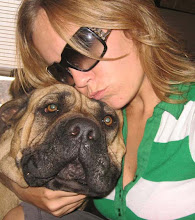In the 1920s, an American named Roswell Eldridge came to England and was dismayed to find that the toy spaniels he so admired in the paintings of the old masters had all but disappeared. The fashion of the day was so dramatically in favor of the flatter-faced toy spaniels that spaniels with the “old-fashioned head” were considered incorrect and when one arose in a litter of puppies, it was never bred.
Eldridge preferred the look of the old toy spaniel and so, in order to seduce breeders into reviving this old type, offered a prize at the 1926 Crufts Dog Show in England for the best female and the best male of the old type, with the Blenheim markings, that most closely resembled those in the familiar paintings. His challenge was met largely with disdain, as this style of spaniel was no longer considered correct, yet the prize money also sparked the interest of breeders. “The purpose of his challenge was to encourage breeders to resurrect the breed as it once was,” Gammon says.
A month after Eldridge’s death in 1928, Miss Mostyn Walker presented a dog called Ann’s Son at the Crufts show and was awarded Eldridge’s prize. Unfortunately, Eldridge never got to see the dog, but the appearance of this old-style toy spaniel spurred a group of interested fanciers to name the breed the Cavalier King Charles Spaniel, and to form a breed club in order to seek official recognition by the Kennel Club. “As an English woman [and an American citizen], I find it very interesting that it took an American to revive this breed that is now so incredibly popular in England,” Wilson says.
The club wrote a breed standard (a written description of the ideal specimen of a breed) to describe this “new” old breed, based on careful study of Ann’s Son and of reproductions of many of the paintings picturing toy spaniels from the 16th, 17th and 18th centuries. The goal of the club was to create, preserve and maintain a natural dog of the old type by breeding to longer-nosed toy spaniels — the very dogs considered undesirable because they didn’t match the current fashion of flatter-faced spaniels.
According to Gammon, purists claim that only these throwbacks of the older type from English Toy Spaniel litters were used to create and solidify the Cavalier King Charles Spaniel, but some believe that other breeds, such as the English Cocker Spaniel, Scottish Spaniel and the Papillon may have been introduced to more quickly solidify the Cavalier King Charles Spaniel type, although nobody knows for sure.
In 1945, England’s Kennel Club recognized the Cavalier King Charles Spaniel as a separate and distinct breed from the flatter-faced King Charles Spaniel (the breed later known in America as the English Toy Spaniel). The Cavalier King Charles Spaniel’s career began anew, and in 1970, a few short decades after recognition, a virtually unknown Cavalier named Alansmere Aquarius won Best in Show at Crufts, before he had even attained the title of Champion. “That’s what shot the breed to recognition and enormous popularity in England,” Wilson says. Since then, the Cavalier King Charles Spaniel continues to be the most popular toy breed in England.
--
Thursday, January 1, 2009
Subscribe to:
Comments (Atom)
